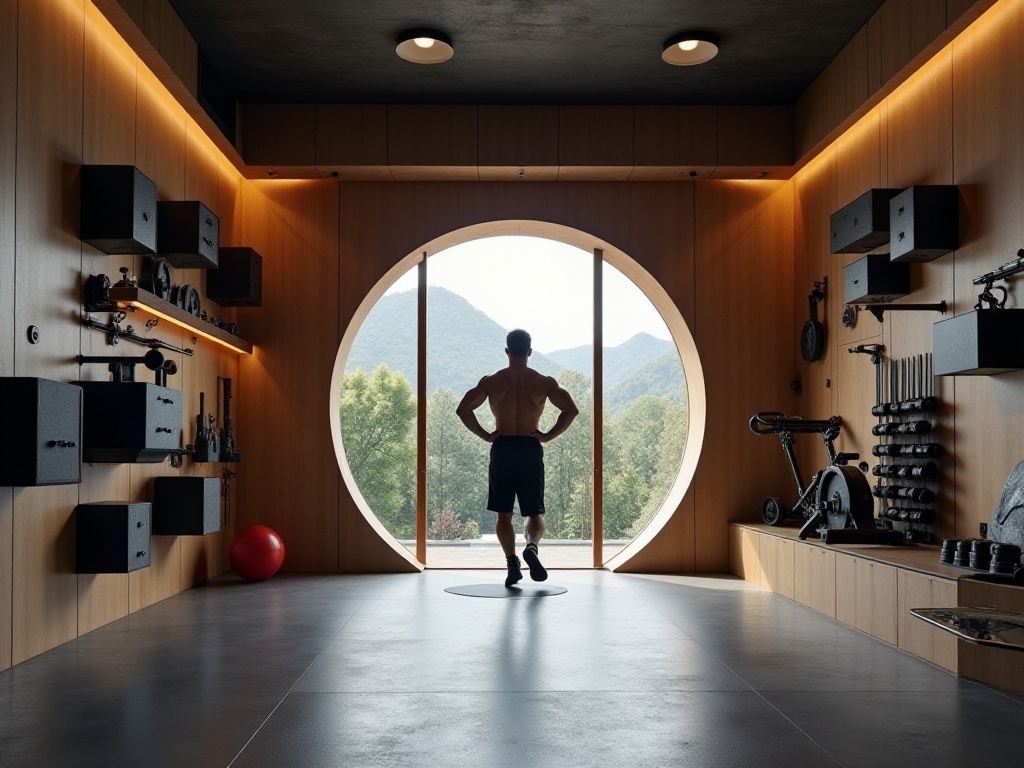Opening Thoughts
To be honest, every time I see fitness check-ins on my social media feed, I fall into deep self-doubt: why can others stick to it while I'm always on and off? Maybe you're like me, constantly making silent promises to start exercising, but always finding excuses to procrastinate? Or perhaps you've started but gave up after just a few days?
As someone who transformed from a couch potato to a fitness enthusiast, I've deeply realized that developing an exercise habit isn't as hard as imagined. Today, let me share my experiences, hoping to help those like me who want to make a change.
Space Setup
"My home is too small, there's no space to exercise." This might be many people's first reaction. But honestly, this is just an excuse. My home isn't big either, but I've carved out a 2-square-meter dedicated fitness area in the living room, right next to the TV. Just laying down a yoga mat and placing two dumbbells creates a fully equipped mini gym.
The key is keeping this space clean and tidy, so you can instantly get into workout mode when you see it. I store all my exercise equipment in a transparent storage box, making everything visible and easily accessible. The surrounding space should remain clear to avoid hitting furniture or other items during exercise.
This dedicated space is really important - it's like your personal territory. I regularly disinfect the yoga mat to keep it clean. I've also placed some plants around it to make the whole space more comfortable and pleasant. Sometimes when I return from work, just seeing this neat exercise area motivates me to work out.
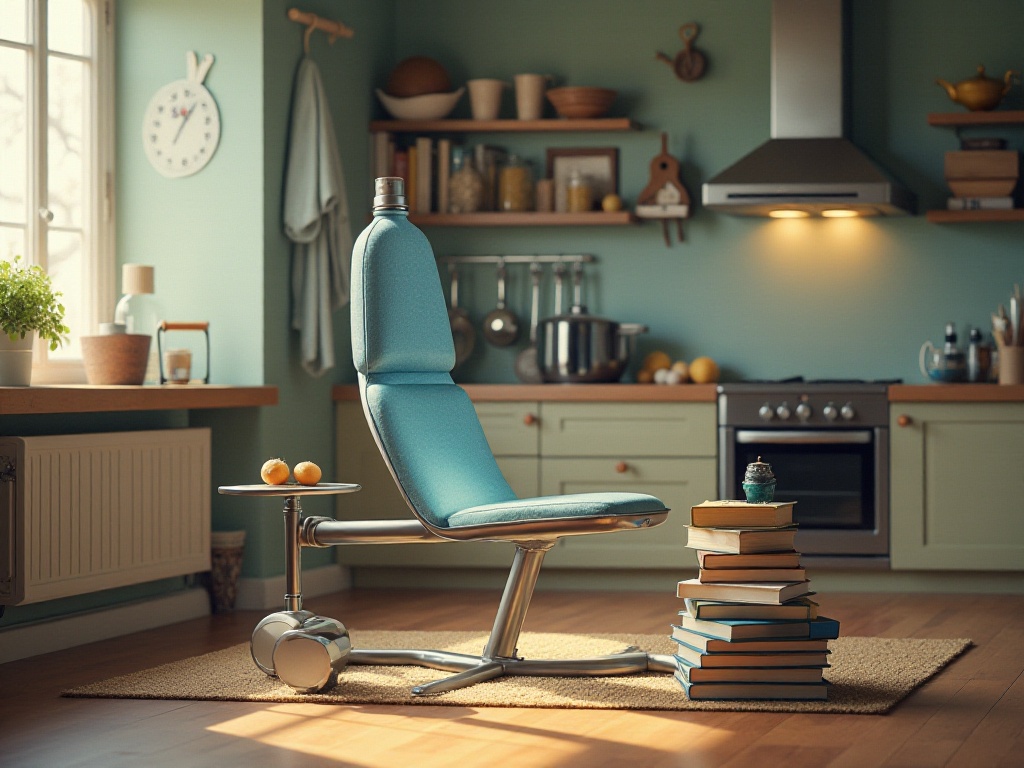
Mindset Adjustment
When it comes to workout gear, you really can't be casual about it. While you don't need to buy particularly expensive items, you must choose what suits you. I learned this the hard way - at first, I thought any T-shirt would do, but I always felt uncomfortable during exercise, which affected my mood. After switching to breathable workout clothes, my whole state changed.
Workout gear isn't just about looking good. Suitable exercise clothes allow you to move more freely and avoid discomfort during workouts. Sports shoes are also important - you need to choose ones that fit your foot type. I used to exercise in regular casual shoes and soon felt foot pain. After switching to professional athletic shoes, not only was it more comfortable, but I could also exercise for longer.
Additionally, workout gear can give you a sense of ceremony. The moment you change into exercise clothes, it's like giving yourself a signal: it's workout time now! This sense of ceremony helps you quickly get into the right mindset and improve exercise efficiency. I now have several sets of workout clothes and choose different combinations each day to make exercise more interesting.
Time Management
Time management is really a skill. Honestly, I used to think I had no time for exercise. I would work overtime until late and just want to lie down and scroll through my phone when I got home. But one day, I suddenly realized I was spending over 3 hours daily on my phone! If I could use just a small portion of that time for exercise, the results would be significant.
Now I've fixed my exercise time to 7 PM every Monday, Wednesday, and Friday. Like meeting a friend, this time is non-negotiable. No matter how busy work gets, I tell my colleagues in advance that I must leave at 7. There might be pressure at first, but after persisting for a while, you'll realize you're investing in your physical health.
Of course, there will be special circumstances, like unexpected overtime or emergencies. At these times, I set myself a "minimum goal" - even if it's just 10 minutes of jump rope or 20 squats. The important thing is maintaining the exercise habit, not pursuing perfect execution.
I've also found that morning exercise is a good choice. Although you need to overcome the temptation to stay in bed at first, the feeling after morning exercise is really great - you feel refreshed and energized. Plus, morning exercise can improve work efficiency throughout the day, which is an unexpected bonus.
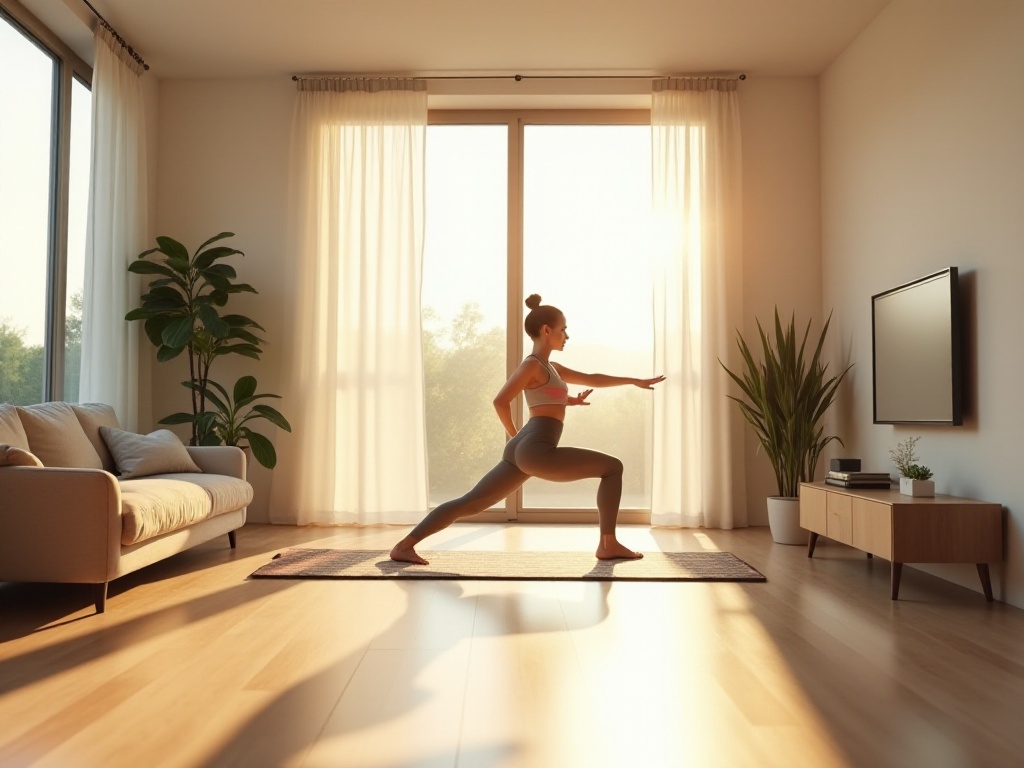
Intensity Control
Speaking of exercise intensity, it's really a science. I've seen too many people trying to work up a heavy sweat from the start, only to be so sore the next day they can't get out of bed, and then they give up completely. Actually, exercise intensity should increase gradually, like climbing stairs - taking it step by step is the right way.
My initial exercise plan was super simple - just 15 minutes of brisk walking daily. Many might think this is too easy, but it was precisely this seemingly simple exercise that helped me slowly develop an exercise habit. Only after my body adapted did I start increasing the duration and intensity. Now I can easily exercise for 30 minutes and complete some basic strength training.
HIIT (High-Intensity Interval Training) is now one of my favorite forms of exercise. It doesn't require much time but is very effective. For example, brisk walking for 30 seconds, then running in place for 30 seconds, alternating like this for 10 minutes. It might feel tiring at first, but persisting brings a real sense of achievement. Plus, this type of training is particularly suitable for home workouts, requiring no special equipment.
Intensity control should be based on your physical condition. If you feel particularly tired or uncomfortable, you should appropriately reduce the intensity. The purpose of exercise is to make your body healthier, not to exhaust it. I now adjust my workout plan based on my daily condition, maintaining a comfortable intensity.
Progress Tracking
Recording progress is really important! I used to think recording was troublesome, but later found that seeing your own progress is really exciting. Now I use fitness apps on my phone to record data from each workout, including duration and calories burned. Every time I see these numbers increasing, I get an inexplicable sense of achievement.
I also regularly take photos to record body changes. You might not notice obvious changes at first, but when you compare after persisting for a while, you'll be pleasantly surprised by your transformation. For example, I went from being able to do only 5 standard push-ups to now being able to do 20 consecutively - this kind of progress is really exciting.
Besides physical changes, I also record some body data like weight, waist circumference, and body fat percentage. These data can more directly reflect the changes brought by exercise. I've made these data into a small chart that I update weekly. Watching these numbers gradually change is like playing a level-up game - it's really interesting.
When progress seems unclear, looking back at previous photos and data helps me find motivation again. These records are like milestones on my fitness journey, witnessing every moment of progress.
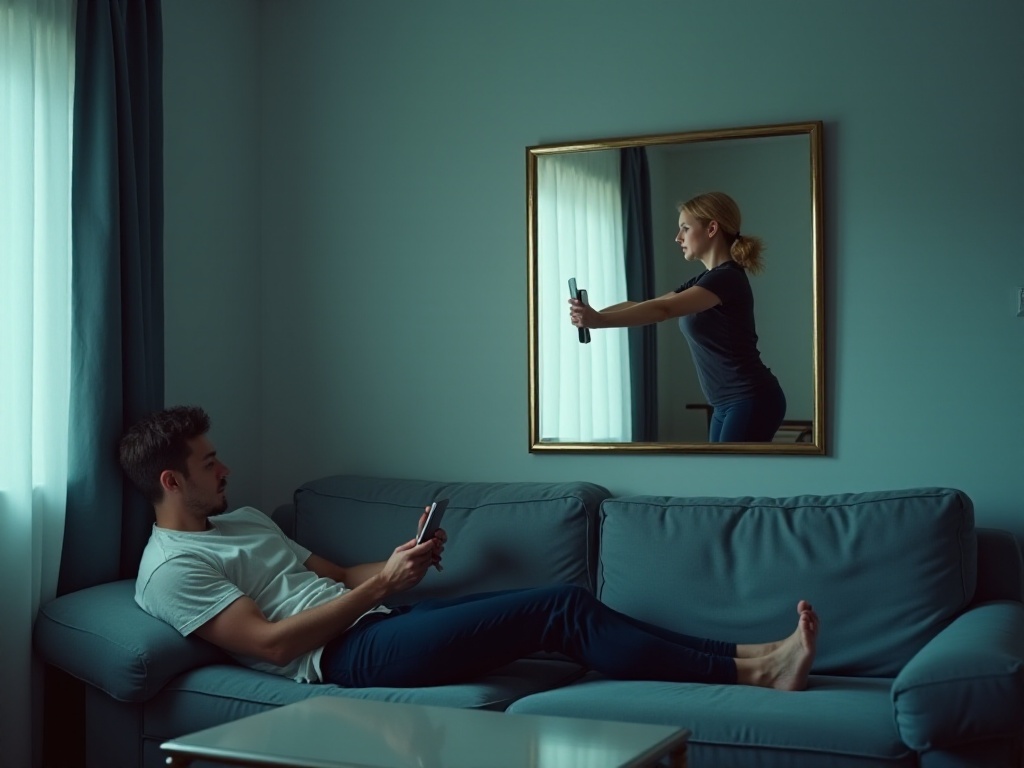
Rewarding Yourself
Honestly, relying solely on willpower to stick with exercise is difficult, so you need to learn to reward yourself. I set a rule: after 30 consecutive days of exercise, I buy myself a new piece of workout equipment. This not only motivates me to persist but also helps me gradually collect a set of professional exercise equipment.
Rewards don't have to be expensive; the key is making yourself look forward to them. For example, I set some small goals: watching a movie I want to see after completing a week's exercise plan, or buying a new sports water bottle after two consecutive weeks of exercise. These small rewards can make exercise more motivating.
I've found that non-food rewards are better. Using food as rewards might affect exercise results. Now my reward list consists of practical items like sports socks, wristbands, and headbands. These things not only motivate me but also actually improve the exercise experience when used.
Alternative Solutions
Not having professional equipment really doesn't matter! Everyday items can become exercise equipment. For example, I often use water bottles as dumbbells - two filled drink bottles make excellent weights. The sofa can be used for modified push-ups, and chairs can assist with squats.
I've even turned my doorframe into a pull-up bar by installing a bar device. Wall corners can be used for wall squats, and stairs for cardio exercise. These everyday "equipment" items are not only convenient and practical but can also inspire creative workouts.
Sometimes I use towels as resistance bands and books as weights. These alternatives might not look professional, but with proper form, they're just as effective. Plus, this creative approach to exercise makes it more interesting.
I've also discovered a trick: turning housework into exercise. For example, you can practice lunges while mopping the floor and stretches while cleaning windows - this way you complete housework while achieving exercise goals.

Making Exercise Fun
To be honest, exercise alone can be boring. So I always try to make it more interesting. For example, I watch TV shows while walking on the treadmill, or do a set of squats during commercial breaks. This way I exercise for half an hour without feeling tired at all.
Music is also a great companion. I've specially curated a workout playlist with rhythmic songs. Exercising to music makes time fly by. Sometimes the workout is over before a song even ends.
I also like exercising with friends. Although we're each at our own homes, we video call and work out together, supervising and encouraging each other. This social exercise not only adds fun but also increases motivation to persist.
Sometimes I also gamify exercise. For example, setting small challenges: completing 100 jump ropes today, or holding a plank for one minute. Turning exercise into small games makes achieving goals feel like passing game levels, giving a special sense of achievement.
Sustained Motivation
Persistence is indeed the hardest part. But I've found that if you can stick with it for 21 days, exercise becomes a habit. And if you can persist for 90 days, you can truly make exercise a lifestyle. So I suggest setting a 21-day mini-goal first, where completing just the basic amount of exercise counts as meeting the goal.
Now I've made exercise an indispensable part of my life. It's as natural as brushing teeth and washing face - I actually feel uncomfortable if I don't exercise. This change didn't happen overnight but through daily accumulation and persistence.
The key to maintaining motivation is finding your own rhythm. Don't blindly follow others' exercise methods; make plans based on your own situation. I found my most suitable exercise method through continuous adjustment.
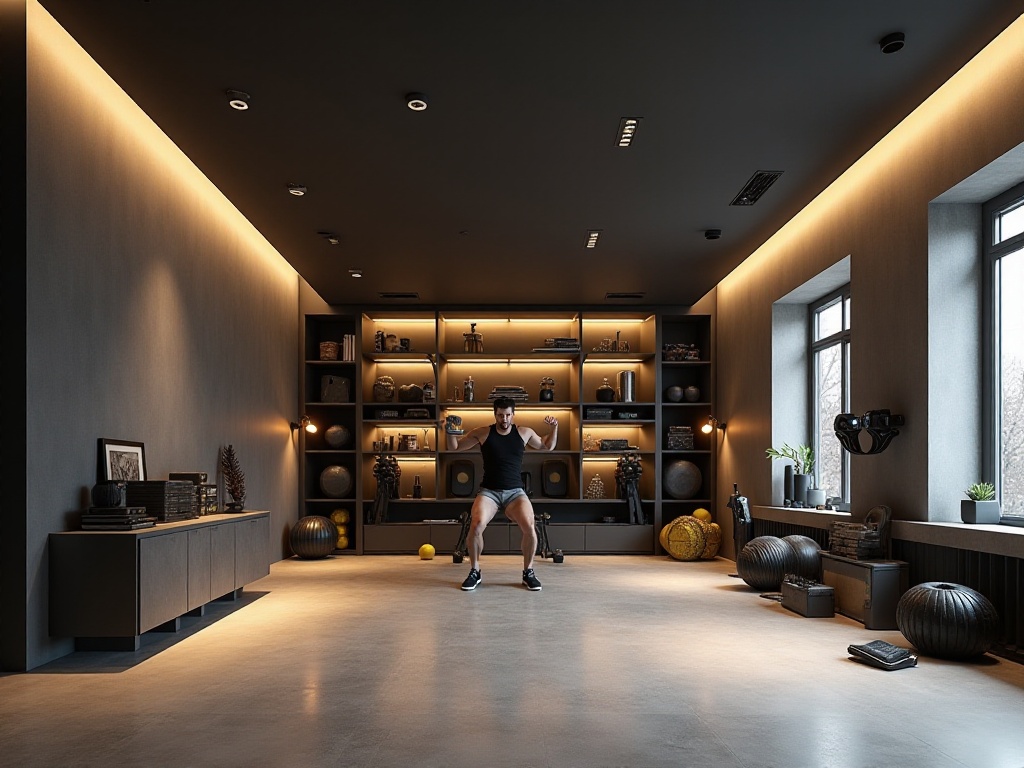
Final Reflections
After more than a year of persistence, I've really gained a lot. Not only have I lost 10 pounds, but I've also become more energetic overall. I used to think exercise was painful, but now I look forward to workout time.
Most importantly, I've discovered that exercise brings not just physical changes but also mental transformation. Now I'm more patient with everything, and my work efficiency has improved. These were unexpected gains.
Actually, exercise is like a dialogue with yourself. Each time you persist, you're telling yourself: I can become better. I hope those reading this article can also find their suitable exercise method and enjoy the happiness that exercise brings.
If you have any interesting fitness tips, feel free to share them in the comments. Let's encourage each other and progress together on this fitness journey!


